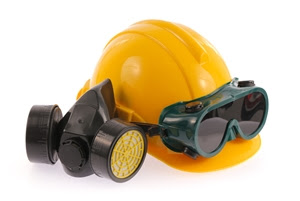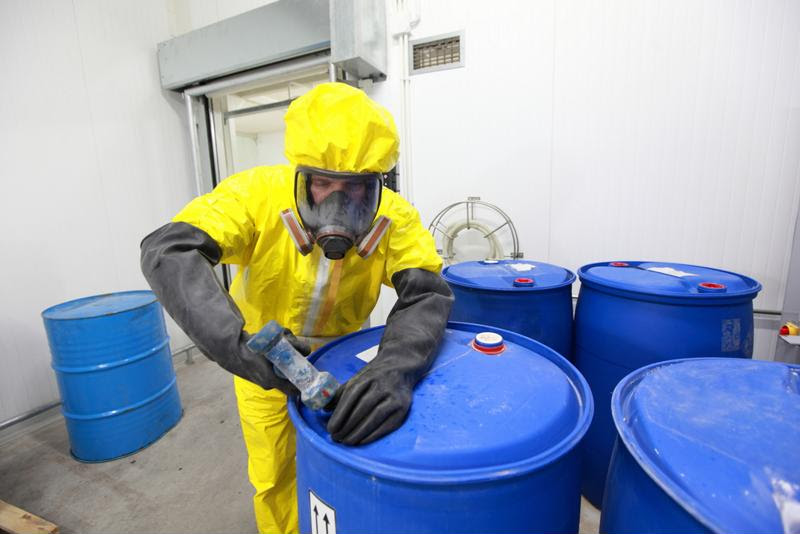Safety training: Dealing with hazardous chemicals and waste

There are a few different OSHA standards that companies dealing with hazardous substances should ensure they follow and comply with. Adequate training is key.

Dealing safely with chemicals requires compliance with no less than two OSHA standards.
Below, we’ve highlighted two different standards relevant to workplaces with hazardous chemicals. Up-to-the-minute instruction in these standards and their practical applications can keep employees safe in the workplace.
- Hazard Communication Standard (HazCom) and the The Globally Harmonized System (GHS): Ensuring every workplace containing chemicals stores and labels those products in a standardized, consistent and secure method is the primary goal of this OSHA standard. As part of compliance, companies must ensure their labels are in line with GHS.
- Hazardous Waste Operations and Emergency Response Standard (HAZWOPER): Workers who have contact with chemicals must be trained in standardized processes designed to keep them safe. This OSHA requirement involves learning to clean up hazardous materials, understanding the best ways to store and transport these substances and distinguishing between hazardous and safe chemicals.
The following are a few of the important elements of each program type to consider when it’s time to implement training.
 Companies must ensure their workers know about hazard communication.
Companies must ensure their workers know about hazard communication.HazCom and GHS
Learning the labeling and communication standards for hazardous substances can prove critical for employees. This is why OSHA requires all businesses that deal with these chemicals to comply with HazCom. Occupational Health & Safety magazine, in its overview of the standard, pointed out workers must receive training in the identification and labeling of hazardous substances when they are first assigned to work with these materials. Furthermore, the addition of new dangers to the workplace is a trigger for additional education.
As for the GHS’s role in the current version of HazCom standards, Material Handling & Logistics pointed out that the universal labeling system provides the framework for current OSHA regulations regarding safety data sheets and chemical warnings. This means workplace labeling must employ eight of the nine GHS pictorial warning categories. The ninth, an environmental warning, is only left out because OSHA doesn’t regulate environmental protection.
The current version of HazCom, also known as HCS 2012, calls for employers to train their workers in observation methods – they should know when chemicals have leaked into the environment. Furthermore, employees must learn protective measures and gain clarity on labeling and communications programs in use.
Keeping training programs current is an important part of compliance. While the composition – and risks – of chemicals seem to be fixed in time, there are certain triggers that require employers to take new actions. Occupational Health & Safety urged companies to launch supplemental training when new hazards are identified. Furthermore, companies need to provide access to the latest safety data sheets.
 Chemical incident management differs depending on the circumstances.
Chemical incident management differs depending on the circumstances.HAZWOPER
While HazCom has to do with everyday labeling and awareness of chemical risks, HAZWOPER has to do with ensuring employees are able to respond when something goes wrong. Occupational Health & Safety magazine pointed out that responders to hazardous materials incidents need to be in compliance with HAZWOPER standards – and the rules also apply to people who transport dangerous goods and may be called upon to help out in the case of an incident.
There are distinctions within HAZWOPER that make clear employees need detailed training – and leaders need to stay aware of what the rules entail. For instance, J.J. Keller & Associates’ Tricia Hodkiewicz used a Safety +Health Magazine article to note that there is a distinct difference between an emergency release of a harmful substance – in which employees from outside the immediate area have to respond – and a more easily contained incidental release. Different rules apply in each situation, and the relevant workers should be aware of what they can and should do.
Such distinctions aren’t just based on one factor – both the amount and toxicity of a substance determine the seriousness of its release, along with mitigating factors such as the amount of space around and whether the area is ventilated. Rules about the management and safe disposal of hazardous substances combine complexity and extreme importance, meaning that training shouldn’t just be available, it should be up to a high standard.
The right courses
Getting staff members in compliance with hazard communication and disposal rules isn’t optional for companies today. Between OSHA requirements and the simple logic of giving these professionals potentially life-saving information, it’s clear that leaders need high-quality training programs.
This is where MasteryTCN can help businesses today. Whether it’s a course to educate workers on the ins and outs of the new GHS-aligned HazCom standard, or an up-to-date HAZWOPER course to keep response personnel and those who come into contact with chemicals safe in the event of a disaster, there’s a relevant choice for organizations of all types.
Source